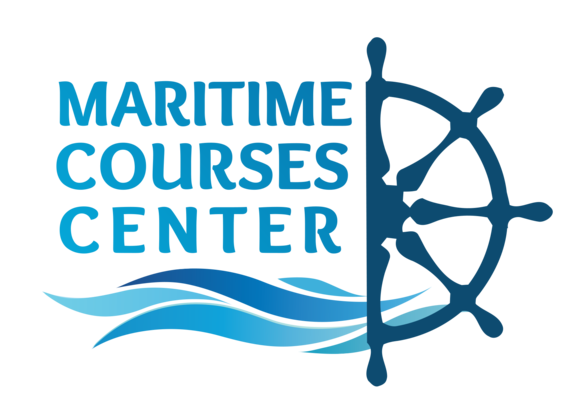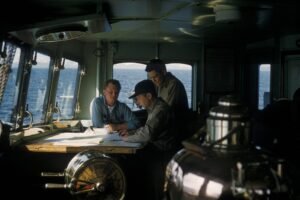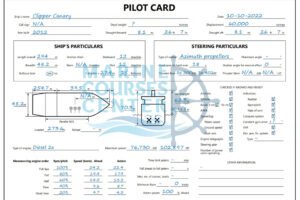The Duties of the officer on ship | seamanship | part 12
The Duties of the officer on the Watch o.o.w
AT SEA
2- Checking the ship’s position.
3- Ensuring that the helmsman is keep on a proper course.
4- To use the echo-sounder when it is necessary to do that .
5- To read the barometer regularly, observe the wind direction and air temperature.
6- To make sure that the navigation lights are switched on and off at sunset and sunrise.
7- To ensure that weather-deck doors are closed when not in use.
8- To check the compass error regularly.
9- To frequently observe smoke-detecting apparatus cabinets.
10- To observe light houses and navigation buoys.
11- To record in the log book:
IN FOG
2- To commence sounding the regulation fog- signal.
3- To commence and organize a radar watch.
4- To call the master.
5- To put extra lookouts forward and after part.
6- To reduce to a moderate speed.
IN PORT, BERTHED
1- To ensure that a proper gangway is kept, and the gangway is adjusted for tidal range.
2- To ensure that all moorings ropes are properly fitted with rat-guards.
3- To ensure that deck lights are switched on and off.
4- To ensure that watchmen are properly relieved.
AT ANCHOR
2- To make sure that the ball of anchor is appear by day.
3- To use the sound signals in poor viability such as fog
4- To make all possible steps to detect a dragging anchor.
5- second anchor is ready for use at anytime .
6- To observe all boats arriving at and leaving the ship, and to keep VHF stand by.
7- To call the master if you have a doubt about any danger.
8- To record in the logbook:
10- The depth of water at the anchorage area.
11- The amount of cable veered.
12- The nature of the bottom.
13- The anchor bearings.
14- to write any ships arriving at and leaving your vessel .
15- The arrival draught.
PRIOR TO ARRIVAL IN PORT.
2- To prepare a list of cargo together with its volume for 3- declaration to the customs officers.
4- To prepare derrick, hatches and cranes ready for immediate commencement of cargo work.
5- To warn the engineers at least 1 hour before the engine are to be stopped.
6- To prepare a gangway and fenders ready for rigging over side.
7- A pilot ladder must be made ready.
8- Mooring lines must be prepared for running, heavy lines and the springs must be ready.
PRIOR TO LEAVING PORT
1- To ensure that all hatchways are securely battened down and 2- all weather deck doors should be closed.
3- Derricks will be stowed and securely.
5- All cargo should be lashed and secured.
6- you must be accurate when reading ship draft.
7- To carry out a thorough search for stowaways in all parts of the ships.
8- To obtain the latest weather-forecast chart.
9- The whistle should be tested.
10- All necessary flags should be made ready.
11- Telephones should be tested.
12- prepare The gyro compass at least 6-12 hours before you leave.
13- The navigation bridge should be made ready (binoculars-chart work-instruments-navigation books- signal lamps-azimuth mirror).
14- Rat guards should be a brought abroad.
15- fenders and gangways should be tended ready for shipping.
When you call the master to the bridge
2- When the conditions of weather or the sea change abruptly.
3- If there is any doubt about ship’s position or navigation.
4- When a distress signal is received either from shore or anther vessel.




